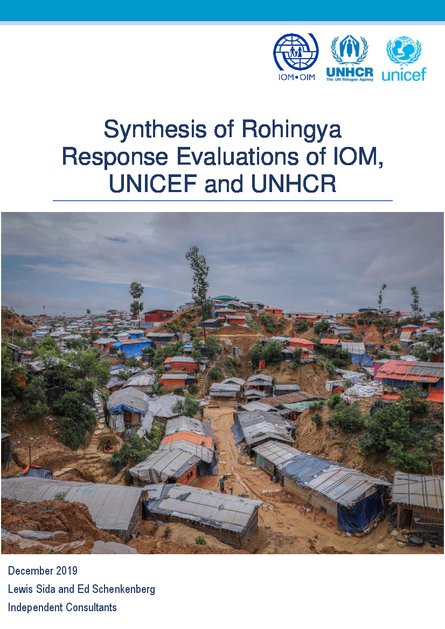
The Rohingya people of Myanmar have faced decades of systematic discrimination and targeted violence. 1 The latest of these episodes, in late August 2017, caused almost one million people to flee to Bangladesh, creating a large-scale humanitarian crisis. The response to this crisis, which saw the involvement of a wide range of formal and informal aid actors, prevented the loss of many lives, and helped to stabilize the situation. This is a significant achievement given the formidable challenges that confronted the humanitarian community, which included the sheer size of the affected population, extreme congestion in camps, the lack of infrastructure, the risk of large-scale epidemics, and a possible second disaster in the form of floods or cyclones during the annual monsoon season.
Two years into the response to the Rohingya refugee crisis, the United Nations Country Team (UNCT) determined that it would be a valuable exercise to synthesize the evidence and findings of three important evaluations, and to consolidate the lessons learned. With this in mind, three agencies with a prominent role in the response, namely, the International Organisation for Migration (IOM), the United Nations High Commissioner for Refugees (UNHCR) and the United Nations Children’s Fund (UNICEF), tasked a team of two consultants with developing a synthesis evaluation report.